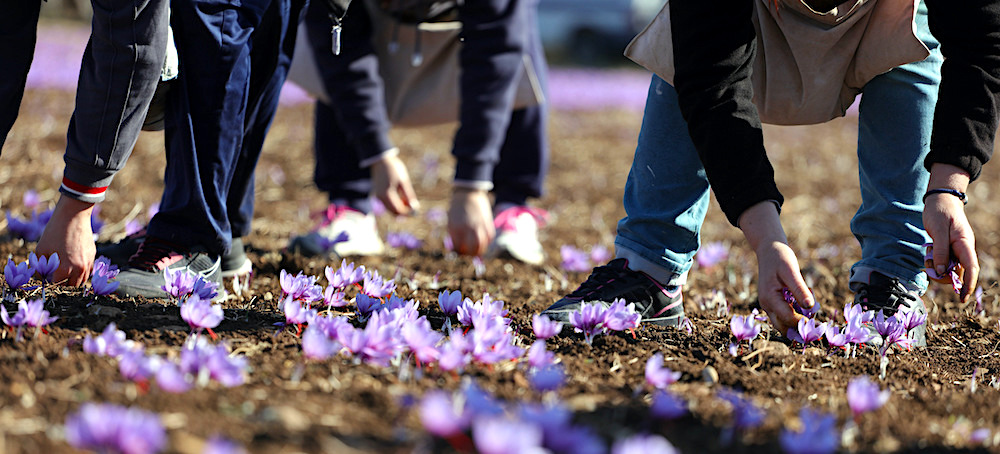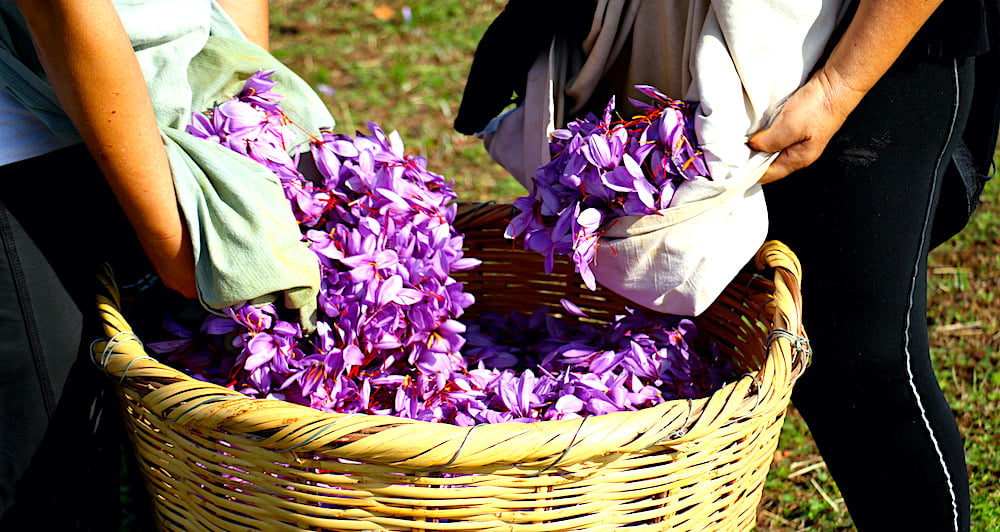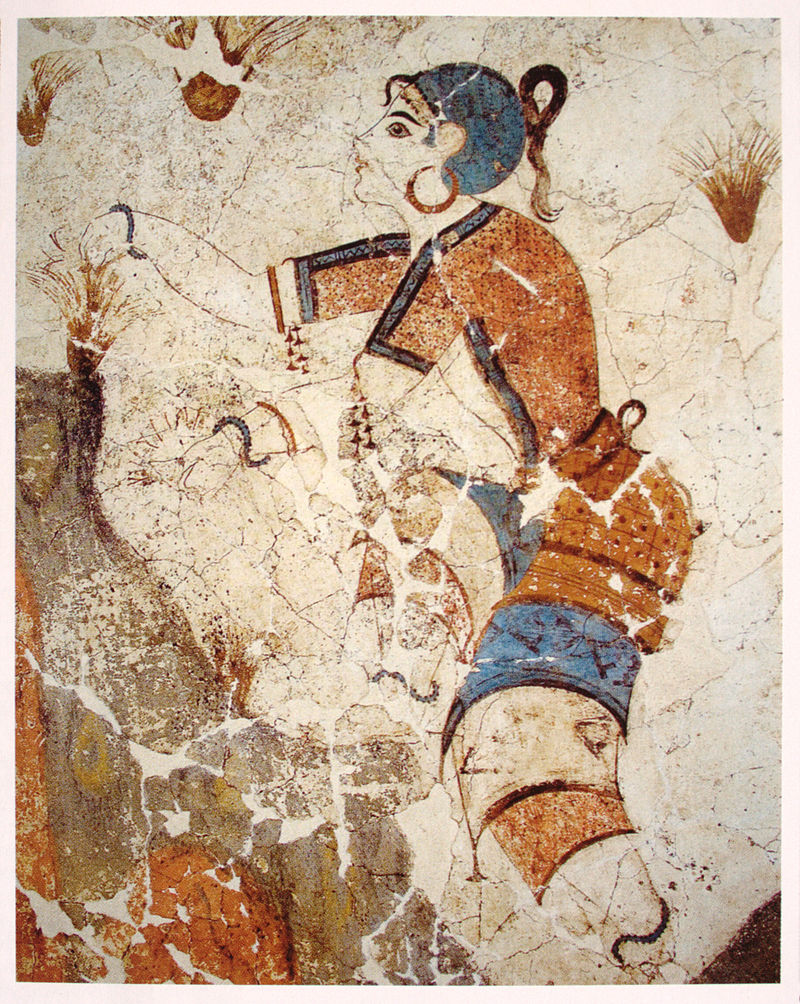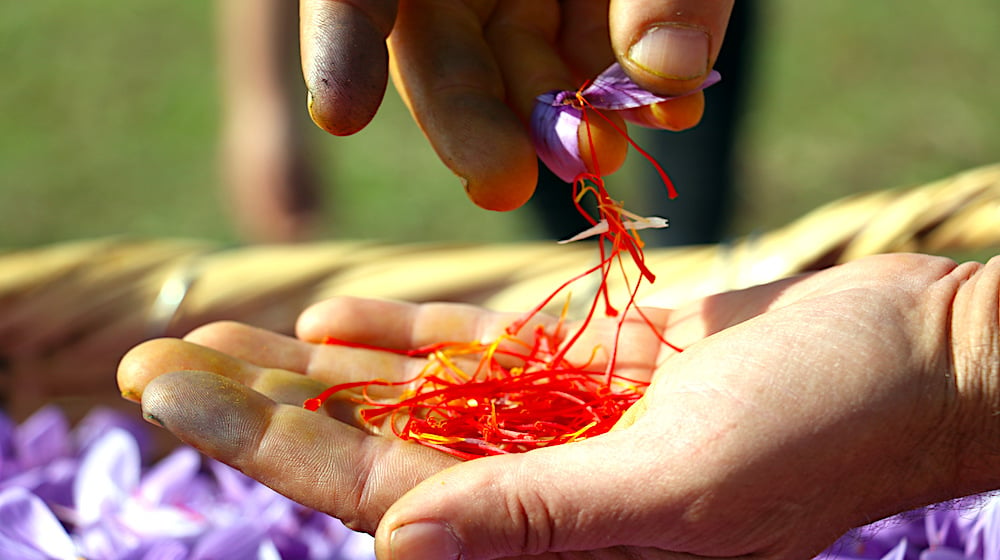
The yearly saffron harvest in Greece is in full swing in the rural areas outside of the northern city of Kozani, where hundreds of farmers crouch over fields of blooming crocus flowers for hours, picking what has long been the world’s most expensive spice.
Saffron, known as krokos in Greek, is highly treasured not only for its delicate, unique taste and vibrant hue but also because of its painstaking, labor-intensive harvesting process.

Farmers and harvesters spend hours every late autumn bent over the fields dotted with the soft purple crocus flowers. They carefully pick out the golden-red filaments, or stigma, that make up the spice. It is a process so intricate that it can only be done by hand even in the age of automation.

The farmers who produce saffron are part of the Kozani Collective, comprised of hundreds of people from forty villages and farms which have been cultivating saffron crocuses for centuries.
Each small flower produces just a minuscule amount of saffron. Around 150,000 flowers are needed to yield just one kilogram (over two pounds) of the precious spice in its dried form.
Once the farmers have harvested all of the saffron, the much-prized spice is taken back to the cooperative to be dried. Once ready for market, the saffron is packaged and distributed in Greece and around the world.

Saffron’s unique flavor and striking color, used to dye food and even fabric, is used in cuisines around the world. Throughout history, the spice was also used in religious practices, traditional medicine, and even beauty routines.

Saffron has been harvested in Greece since ancient times
Greeks have harvested saffron since ancient times. The tradition has survived throughout the centuries, and Greece currently produces about five percent of the world’s supply of the most sought-after spice.
The Ancient Greeks explained the existence of saffron, this wonderful product of nature, with a myth. Krokos was a young Spartan and friend of God Hermes. One day, the two friends were playing. While playing, Hermes hit his friend, Krokos, by accident on the head, and Krokos died. At the place he died, a flower grew, symbolizing the body of Krokos. Three drops of his blood fell in the center of the flower. These drops became the stigmata. Ever since, the flower has been called Krokos, and the stigmata provide us with the famous saffron.
Furthermore, Homer referred to this ‘gold of the Greek earth’ in the Iliad. “The Sunrise drew her crocus-like scarf over the sea to bring light on Gods and men alike,” he wrote.
See all the latest news from Greece and the world at Greekreporter.com. Contact our newsroom to report an update or send your story, photos and videos. Follow GR on Google News and subscribe here to our daily email!



